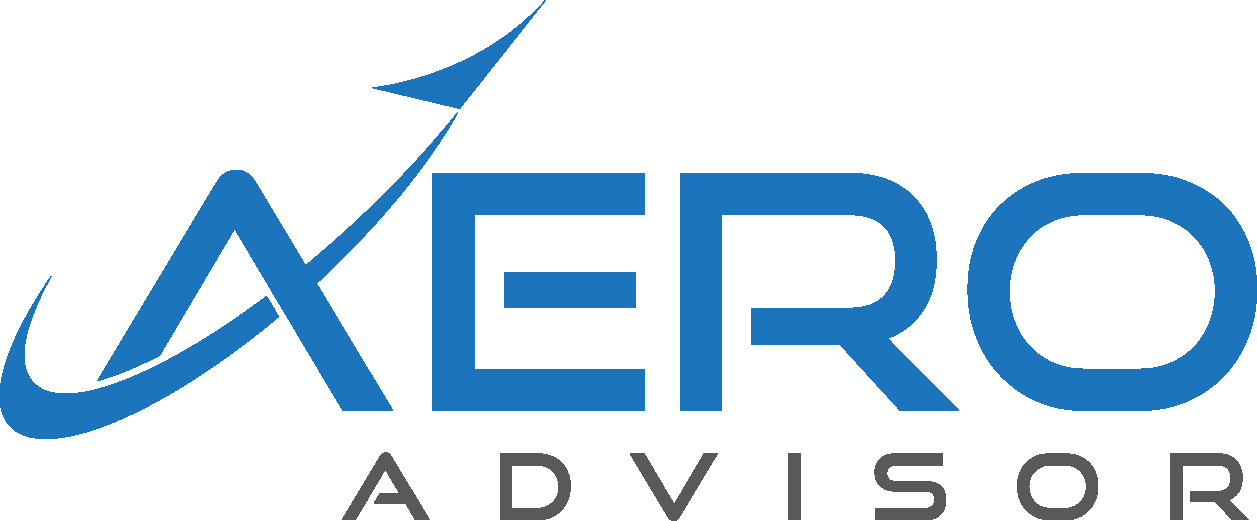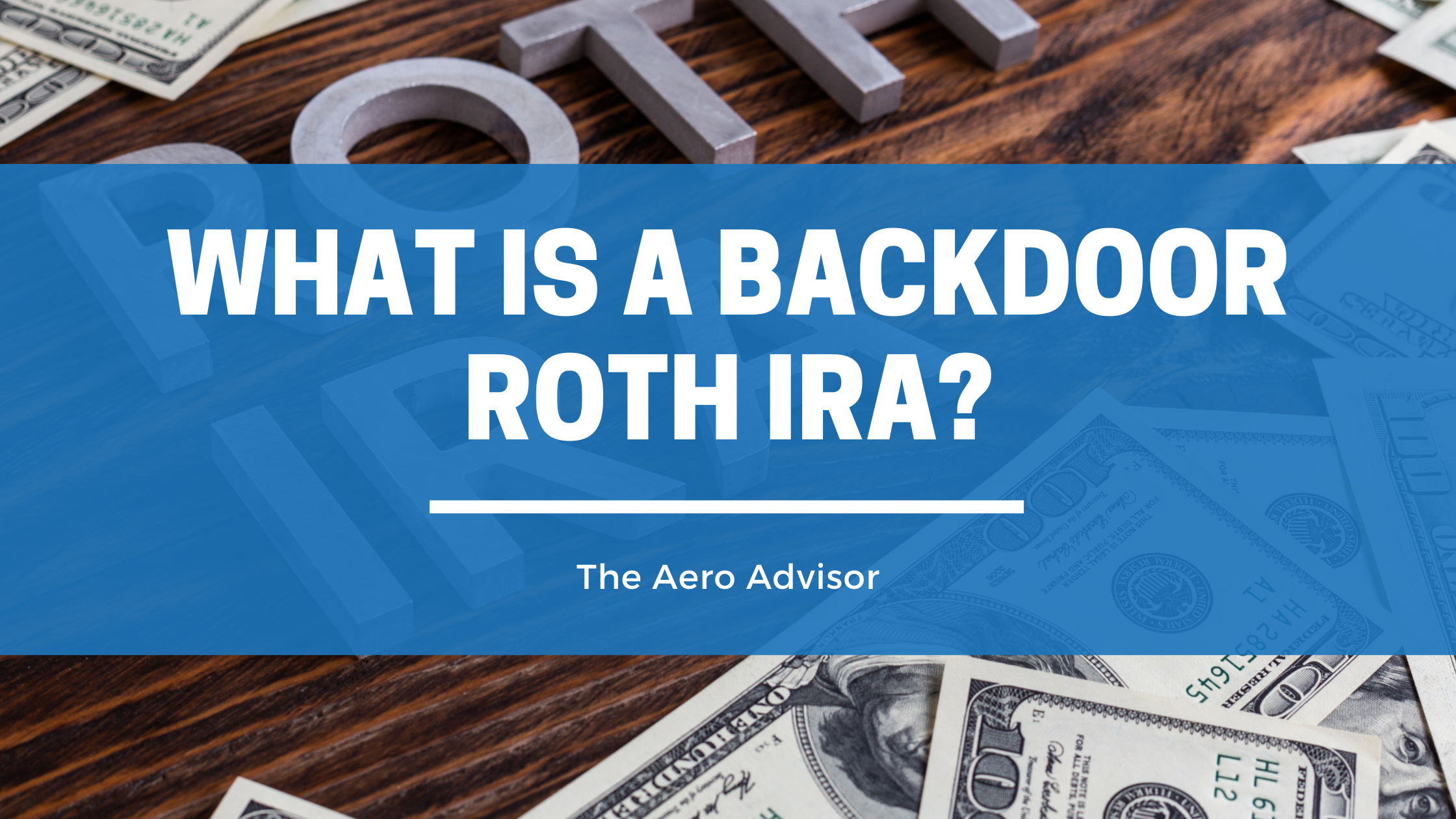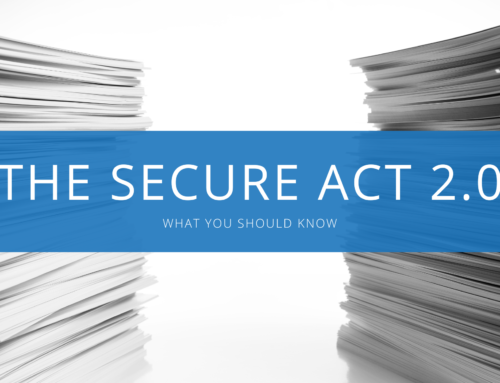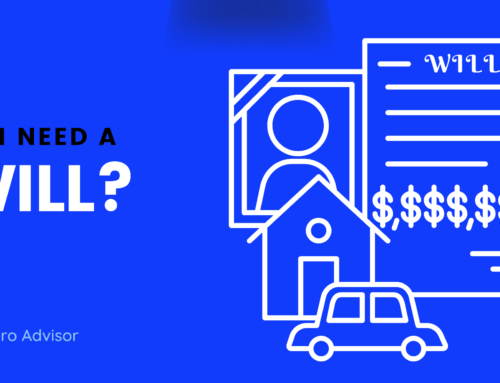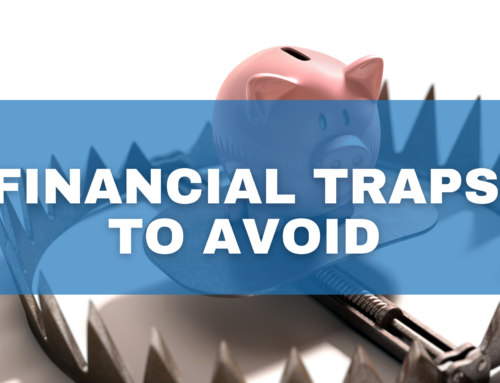What is a backdoor Roth IRA? This has become a common question I get with investors that might be over the income limit to contribute to a Roth directly. To be totally clear, a backdoor Roth IRA is more of a strategy than a type of account.
A Roth IRA is a type of account investors can use to save for retirement that offers tax-free growth and tax-free withdrawals in retirement. However, not everyone is eligible to contribute to a Roth IRA because of income limitations. Related: Traditional IRA or Roth IRA?
For example, in 2023, if your income is above $153,000 for single filers or $228,000 for married couples filing jointly, you cannot contribute to a Roth IRA directly. However, there is a strategy called the backdoor Roth IRA that allows you to contribute to a Roth IRA regardless of your income level. In this article, we will explain what a backdoor Roth IRA is, how it works, and why it can be a valuable strategy for retirement savings.
What is a backdoor Roth IRA?
A backdoor Roth IRA is a strategy that allows high earners to convert traditional IRA contributions to a Roth IRA. It is a way to get around the income limits that prevent direct contributions to Roth IRAs. Basically, the strategy involves making a non-deductible contribution to a traditional IRA and then converting it to a Roth IRA. Because there are no income limits for making non-deductible contributions to a traditional IRA, this strategy allows high earners to contribute to a Roth IRA indirectly (that’s where the backdoor part comes in).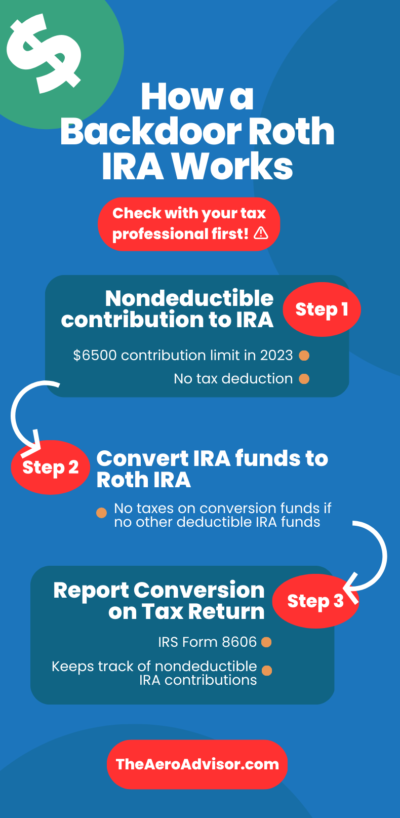
How does it work?
The backdoor Roth IRA strategy involves three steps:
- Make a non-deductible contribution to a traditional IRA. The contribution limit for a traditional IRA in 2023 is $6,000 for those under 50 years old and $7,000 for those 50 and older. If you have a traditional IRA with pre-tax contributions, you must make sure to keep the non-deductible contributions separate.
- Convert the traditional IRA contribution to a Roth IRA. After making the non-deductible contribution, you can convert the money to a Roth IRA. Because you made a non-deductible contribution, you won’t owe any taxes on the conversion. However, if you have other pre-tax IRA contributions, you may owe taxes on a portion of the conversion.
- Report the conversion on your tax return. You will need to report the conversion on your tax return using IRS Form 8606. The form helps to keep track of any non-deductible contributions you make to your traditional IRA.
Why should you consider a backdoor Roth IRA?
Let’s look at the reasons you might benefit from this strategy:
- Tax-Free Growth and Withdrawals: Like a regular Roth IRA, a backdoor Roth offers tax-free growth and withdrawals in retirement. This means that you won’t owe any taxes on your investment gains, and you can withdraw your money tax-free in retirement.
- No Income Limits: This strategy allows high earners to contribute to a Roth regardless of income level. This can be especially valuable if you don’t have access to a 401(k) plan or if you want to maximize your tax-free retirement savings.
- Diversification: A backdoor Roth can be a good way to diversify your retirement savings. If you have already maxed out your contributions to a 401(k) plan or a traditional IRA, a backdoor Roth IRA can be a good way to save even more for retirement. It also might help you diversify the tax treatment of your retirement funds (pre-tax vs. after-tax).
- Estate Planning: Roth IRAs can be a valuable estate planning tool because they offer tax-free growth and withdrawals for your heirs as well. By using this strategy, you can pass on tax-free retirement savings to your loved ones.
What are the downsides of a backdoor Roth IRA?
While this might be a good strategy for some, there are a few downsides to consider:
- Taxes on Pre-Tax Contributions: If you have other pre-tax contributions to a traditional IRA, you may owe taxes on a portion of the conversion. This is because the IRS considers all your traditional IRA contributions when determining the taxability of your conversion. Therefore, if you have a significant balance in a traditional IRA with pre-tax contributions, a backdoor Roth IRA may not be the best strategy for you.
- Pro-Rata Rule: The pro-rata rule is another downside to a backdoor Roth IRA. The pro-rata rule requires you to consider all your traditional IRA contributions when calculating the taxability of a conversion. Your CPA along with your financial advisor can help you calculate this before making the conversion to see how it might affect you.
- Contribution Limits: The contribution limits for a backdoor Roth IRA are the same as a regular Roth IRA. If you are under 50 years old, you can contribute up to $6,500 per year. If you are 50 or older, you can contribute up to $7,500 per year. While this is a significant amount of money, it may not be enough for some high earners who are looking to maximize their retirement savings.
A backdoor Roth IRA can be a valuable strategy for high earners who want to contribute to a Roth but are not eligible due to income limitations.
However, as with any retirement savings strategy you put into place, it is best to consult with a financial advisor and your tax professional to determine what makes the most sense for your individual retirement plan.
Can't find what you're looking for on our website? Have a question regarding your financial picture? Want to leave us some feedback? We would love to hear from you. You can email me at Brian@TheAeroAdvisor.com or fill out the form below.
By submitting this form, you are consenting to receive marketing emails from: . You can revoke your consent to receive emails at any time by using the SafeUnsubscribe® link, found at the bottom of every email. Emails are serviced by Constant Contact
The opinions voiced in this material are for general information only. They are not intended to provide specific advice or recommendations for any individual, nor intended as tax advice. We suggest that you discuss your specific situation with a qualified tax or legal advisor.
LPL Tracking #417348-1
